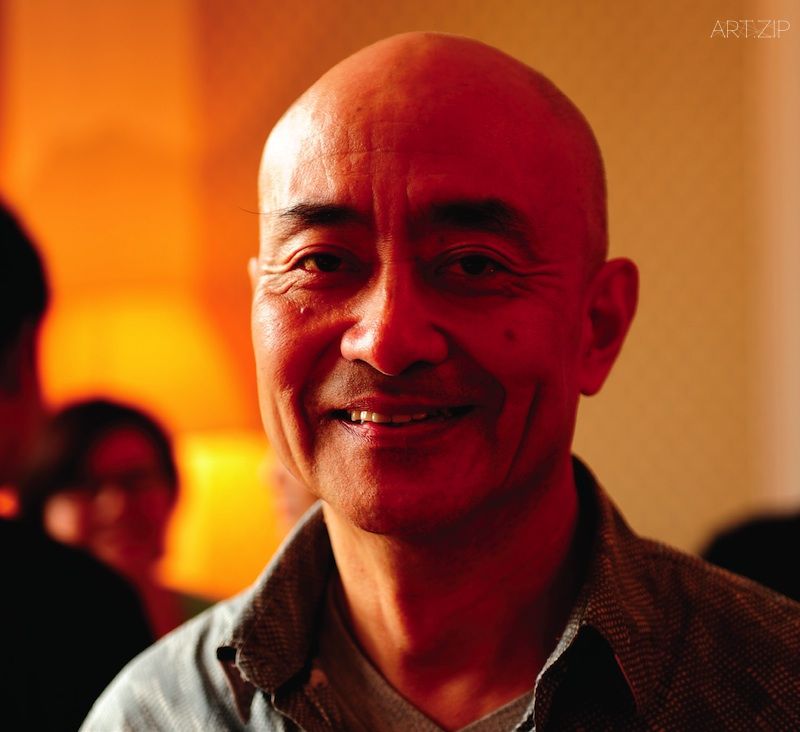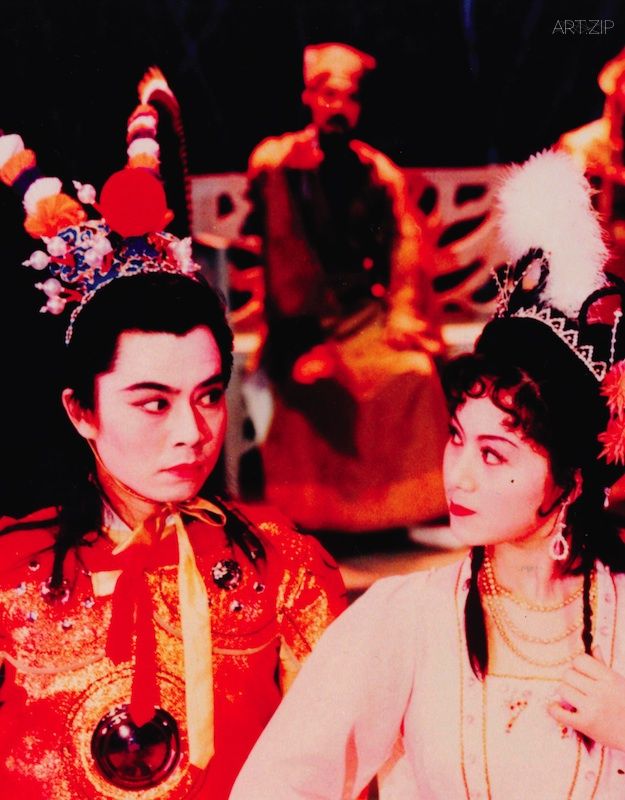
ART.ZiP: In your creation of The Sun Is Not For Us, how did you realize the performers’ independent creativity in such a context of Chinese text?
J: The answer is simple: let it go. Believe their creativity. The creation of The Sun Is Not For Us was a very special and very challenging experience. I have directed plays for American and British students before; I am quite clear about the difference between them and Chinese students and able to grasp how to work together with them, so if just to produce a play in the UK, it is not much special or challenging. The fact was the goal was not simply to find a script to rehearse and then perform, but to let a group of British young people perform a masterpiece of Chinese play —— the play of Cao Yu, and asked them to act Cao’s characters in their eyes and minds on the basis of their own understandings, so as to perform a play ‘of their own’. That is to say, it needed a re-creation. Originally, the relationship between the director and the performer should not simply be ‘I direct you perform’, now, with such an intention, the director is much less a final-decision-maker; for this reason, it is necessary to stimulate the performers’ own creativity as far as possible, the more their own elements are there, the more this production will be in line with its original intention.
However, all the performers were British, and they had little knowledge about Chinese works, so the guidance is still necessary. Besides, since they were all students, even we did not mention about ‘education’, it was still a matter of educating. We formulated the guidelines: step one: read the script! This is the foundation for everything. Thereupon, they were ‘forced’ to read five English versions of Cao’s script —— this is a hard work! Fortunately, they were very interested in it. The next step is discussion, after reading the script, they are asked about their views on the story, characters, surroundings and background in the play, and then the feelings and emotions they accepted as well as the ideas contained in the story, in which the key point is how to see all these things from a standpoint of today’s British people. This step is extremely important and critical, for this determines the direction of following creation.
After reading and discussion, then we began the creation, the next step is ‘tentative scene selection’, in which, the performs would choose the characters and scenes that impressed them most, and then try to rehearse a small piece to show to us; in this way, I could find out the ‘touching points’ and ‘exciting points’ in their performances, in which some of their choices were the same as mine and some were different. Then, I would gather their tentative works up and take them all into account, and until this time had the scenes been preliminarily fixed on and roles been assigned. Obviously, this is quite different from the general rehearsal procedure.
I gave more directions at the very beginning of the rehearsal; I would refer to the original script and hold open rehearsal to seek opinions. Since what I want is a play with more elements of their own creation, after the open rehearsal and getting opinions from the audience, I asked them to speak out their views and put forward proposals freely, and then tired out in groups. I emphasized that now it was a free and open stage, all of you should give full play to your ideas and perform them out, I as a director just stood aside for the moment. (At that time, in order to ‘arouse them’, I would say ‘now, I encourage your rebellion’, ‘do your rehearsal, just ignore me’ and some other exaggerated words’.) I could do this at that time, because I knew that the performers had already had a rather deep understanding of the plot and characters, and also had a rough framework as the basis. This step has been proved to be extremely fruitful, and whenever we got together to see the shows, we could delightedly find a lot of new things.
Of course, thereafter, I went back to be a director, but I basically retained all their inventions, I just had all the scenes laid out so as to made them a whole and integrated all the stage, position, lighting, projection, music and sound together. So, in the whole process, although I have always been dominant as regards the basic point of Chinese text, in the processing of specific matters, I gave them a rather free hand, even more, I ‘made so bold’ as to give them a free hand, which means I was not afraid of ‘the change of flavor’, because the ‘flavor’ proceeding from their standpoints was exactly what I want. It was certainly somewhat ‘dangerous’ and I did worry about it, but I was confident that I could make it and the final result would not be wide of the mark.
ART.ZiP:在《太陽不是我們的》的創作中,你怎 麼實現演員們的自主性創造力,在這樣一個中 國文本的語境下?
J:簡單一句話的回答是:放手。相信他們的創造力。 《太陽不是我們的》的創作是一個非常特殊的也 是非常挑戰的經歷。我之前給美國、英國的學生 都導過戲,非常清楚他們和中國學生之間的不同, 也能掌握如何與他們一起工作的方式,所以如果 僅是在英國製作一個戲,不能說有什麼特殊或挑 戰。事情是,這次制定的目標不是簡單找一個劇本 排出來上演,而是把中國戲劇的精品曹禺劇作放 到一群英國年輕人手上,由他們的感受出發作為 基礎,表演出他們眼中、心中的曹禺筆下的人物, 演出一出屬於”他們的”戲來。這就是說,要作一次 再創造。本來導演對演員就不該是簡單的”我導 你演”,現在在這樣一個意圖下更是不能導演說了 算,那就必須最大地碰撞出演員自身的創造力,他 們的東西越多,越符合這個製作的初衷。不過演員們都是英國人,一開始對中國作品是 瞭解極少的,所以引導仍屬必須。再加上演員 是學生,不說”教育”也有教育的意義在內。我們 制訂的方針是:第一階段:讀劇本!這是一切的 基礎。於是他們”被逼”讀五個曹禺的劇本(英譯 本,當然)——這是有點艱苦的!好在他們還 很有興趣讀。接下來就是討論,大家說出讀本 子後對劇中故事、人物、週遭環境、背景,進而 到他們所接收到的感覺感情、故事所包含的思 想,重點是,站在今天英國人的角度,他們怎麼 看這一切。這一步是極其重要而關鍵的,因為 這決定了以後創作的方向。
從閲讀、討論進入創作,我們繼而進行的是”試 探選場”,即由演員們找出他們最印象深刻的人 物及場景,自己試着排一小段,拿出來演給大家 看,於是我就知道了他們的”觸動點”和”興奮點” 在哪裡,有的和我自己的選擇相同,也有不同 的。這樣,我根據眾人的試驗品,歸合攏來,直 到這時才初步選定了場次,和分配了角色。很明 顯,這和一般排戲的程序是很不相同的。
在一開始排練我指導較多、拉出初稿、並作了公 開排練來徵求意見,由於我要的是更多出於他 們自身的創造,公開排練見觀眾聽意見後我即 提出要大家自由敞開地發表見解,提出方案,並 且分組試排。我強調,現在這是一個自由開放 的階段,把大家的想法完全發揮出來、演出來, 我作為導演暫退一邊。當時我”鼓動群眾”的話 中包括”現在我鼓勵你們反叛”和”你們扔開我排 練”等誇張之詞。我知道,之所以可以在此時這 樣做,是因為演員們已經對劇情和人物有了相 當的理解,並已經有了一個粗架子作為基礎了。 這個階段被證明是極其有收穫的,每次大家集 中來看呈現時,都可以欣喜地看到許多新東西。
此後當然導演又復位了,但我基本上保留了所有 他們的創造發明,只是把所有場景編排穿插構 成一個整體,把舞臺、地位、燈光、投影、音樂 音響等都捏合到一起。所以整個過程中,雖然在 中國文本這個基點上我始終占主導,但具體處 理上我相當放手,而且是”壯了膽”放手,那就是 說不怕”走了味”,因為要的就是從他們發出的” 味”。這裡是有”危險性”的,我不是沒有擔心過, 但我自信能駕馭,最終的結果不會是離譜的。


